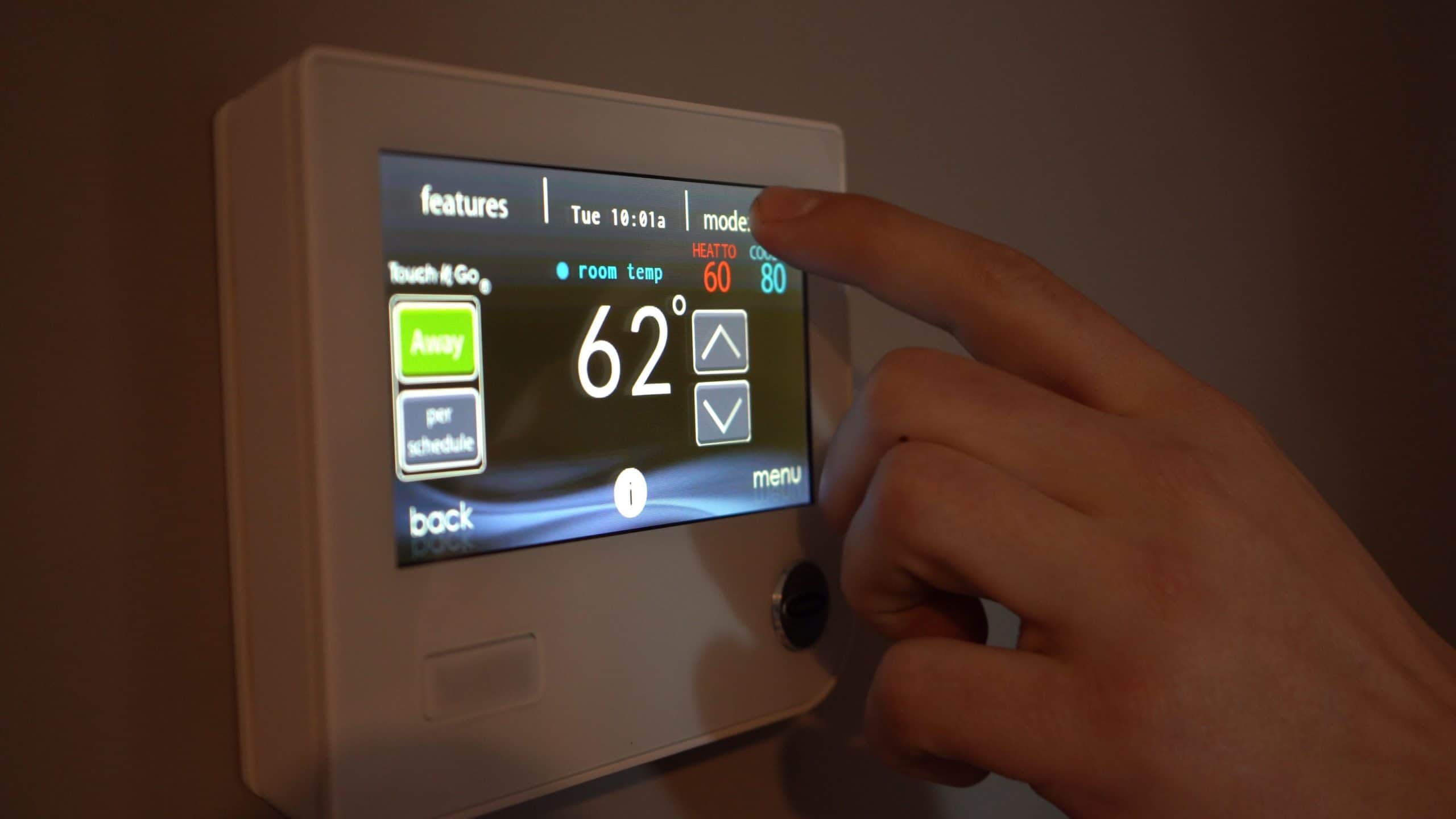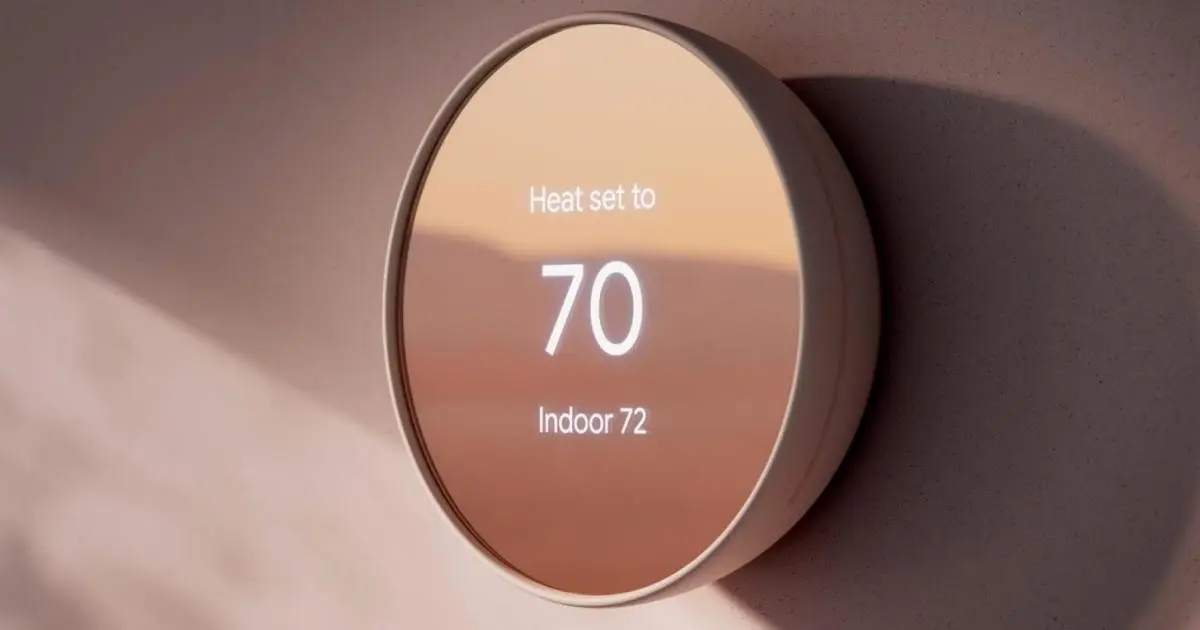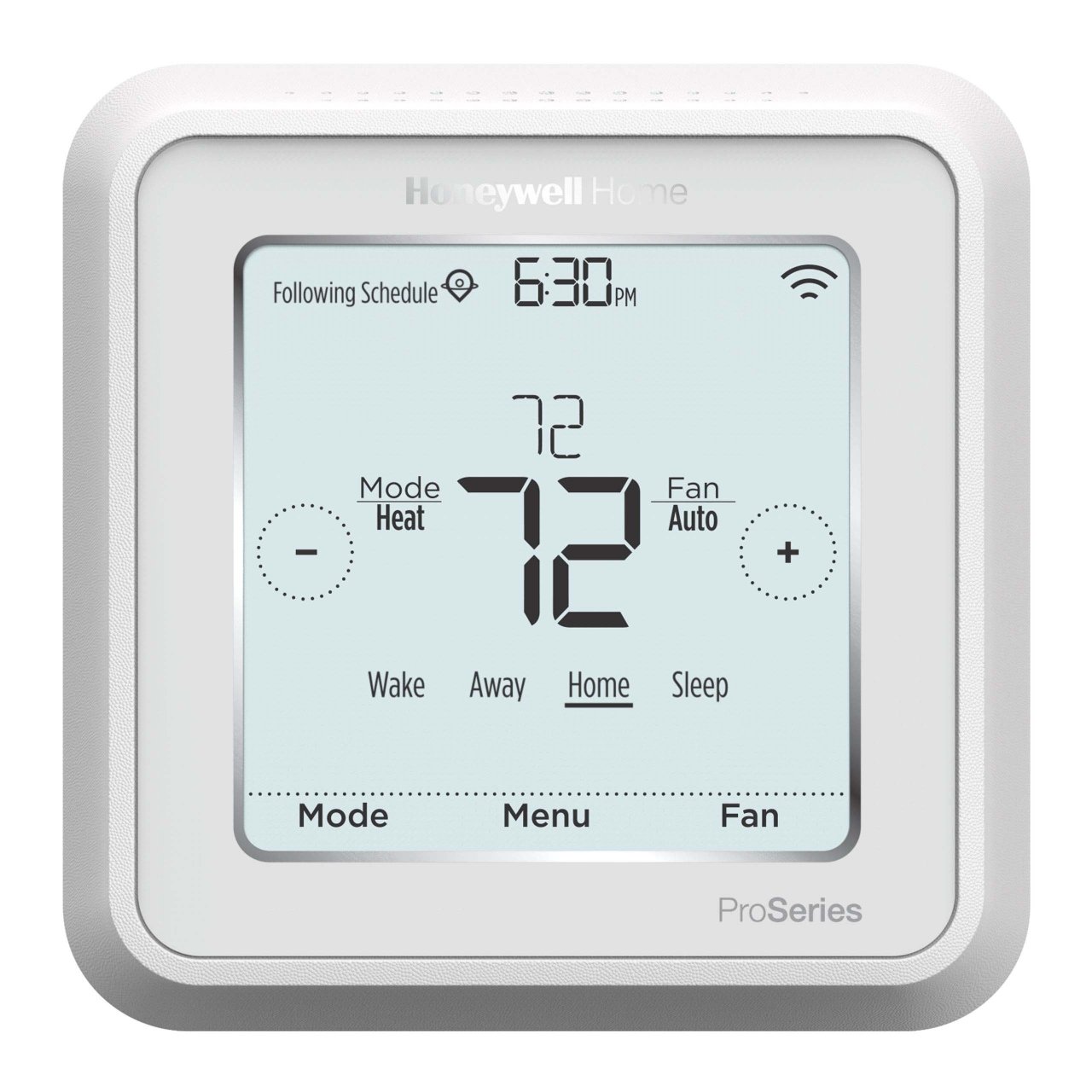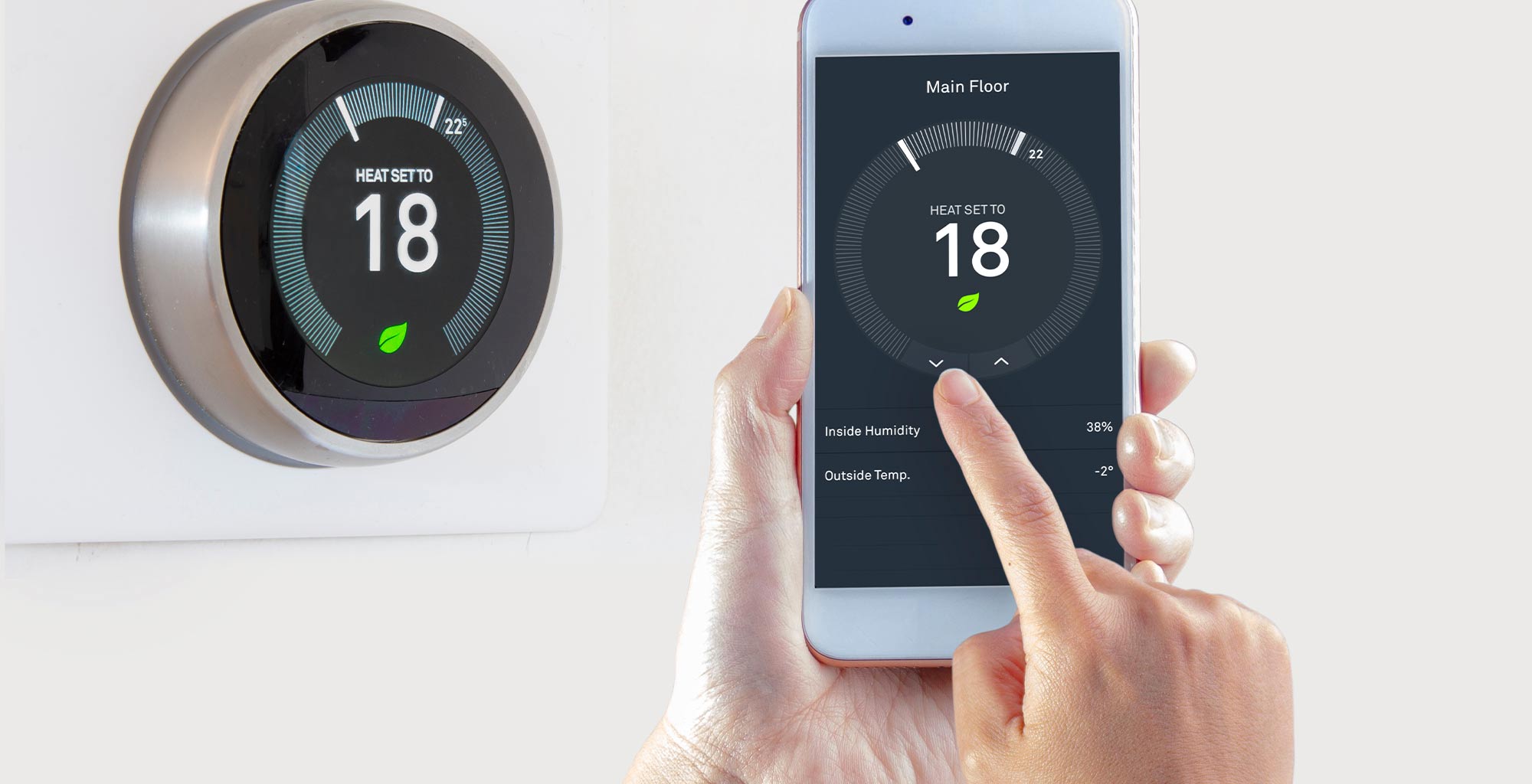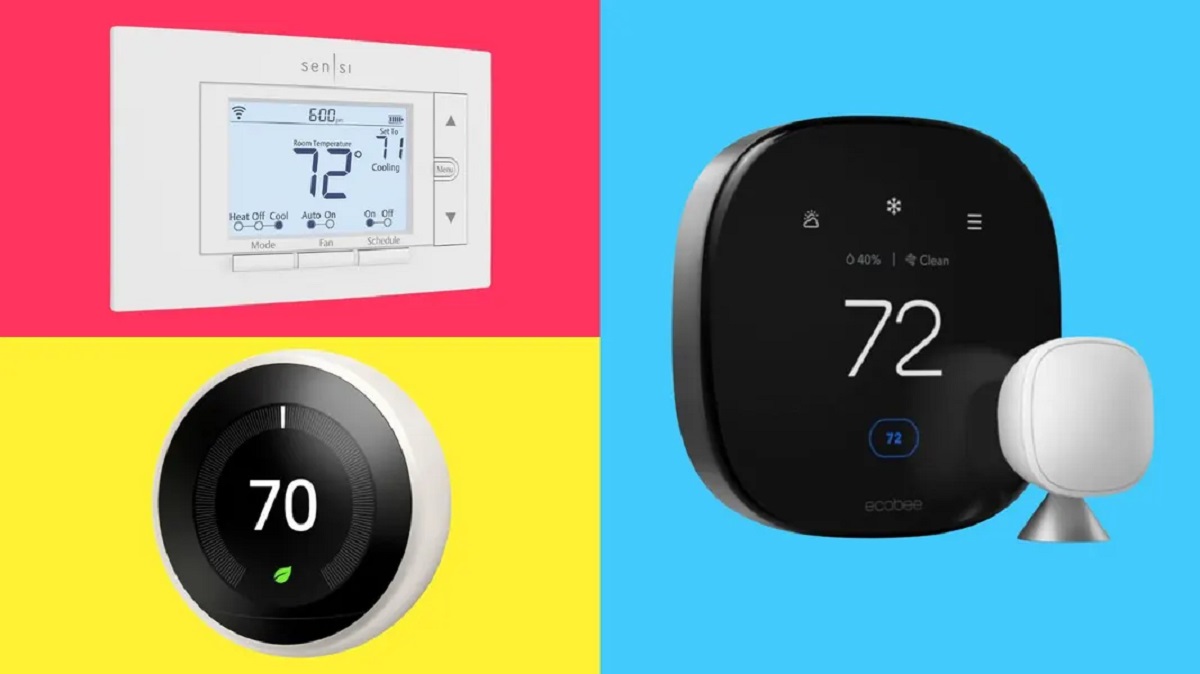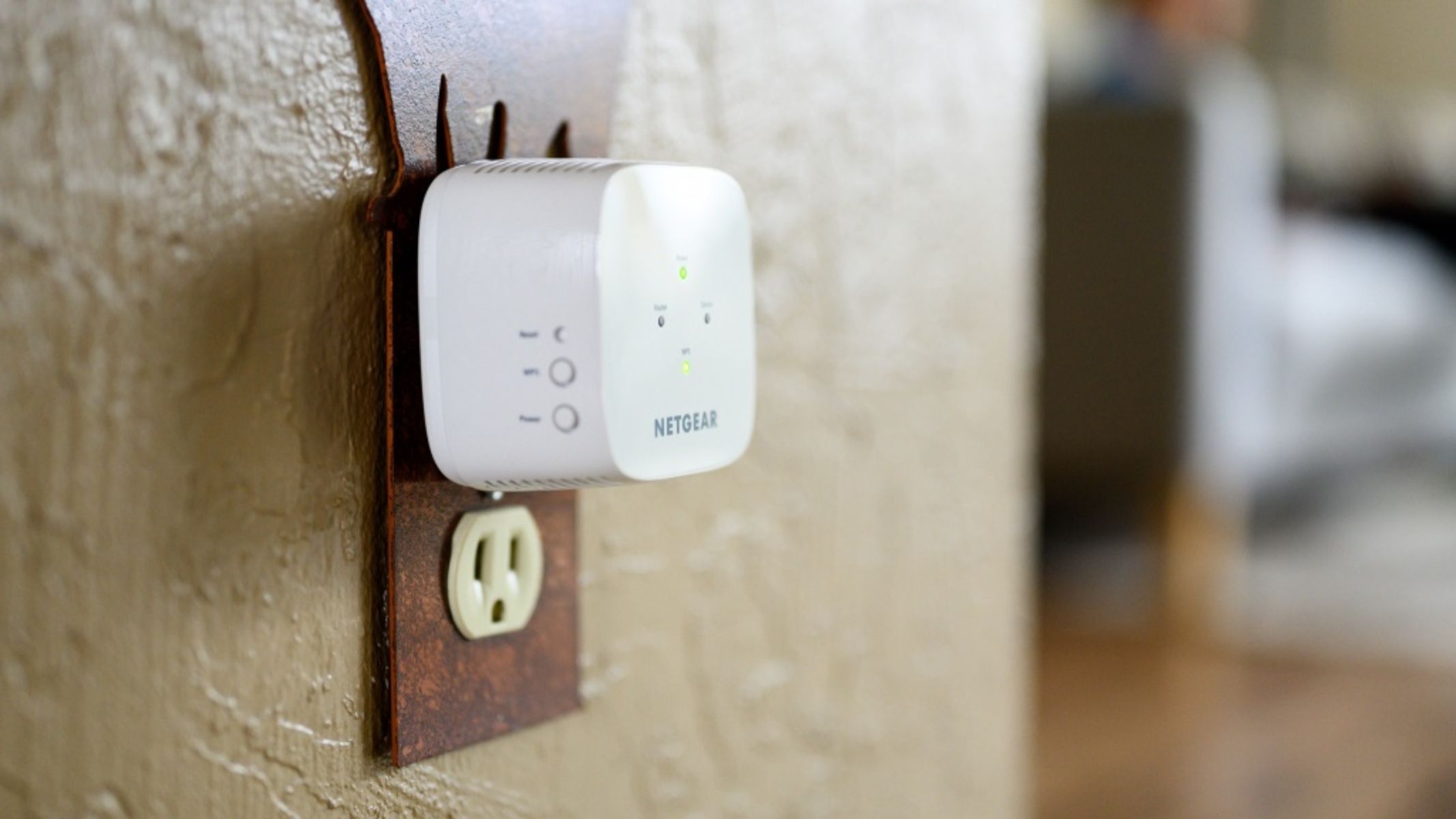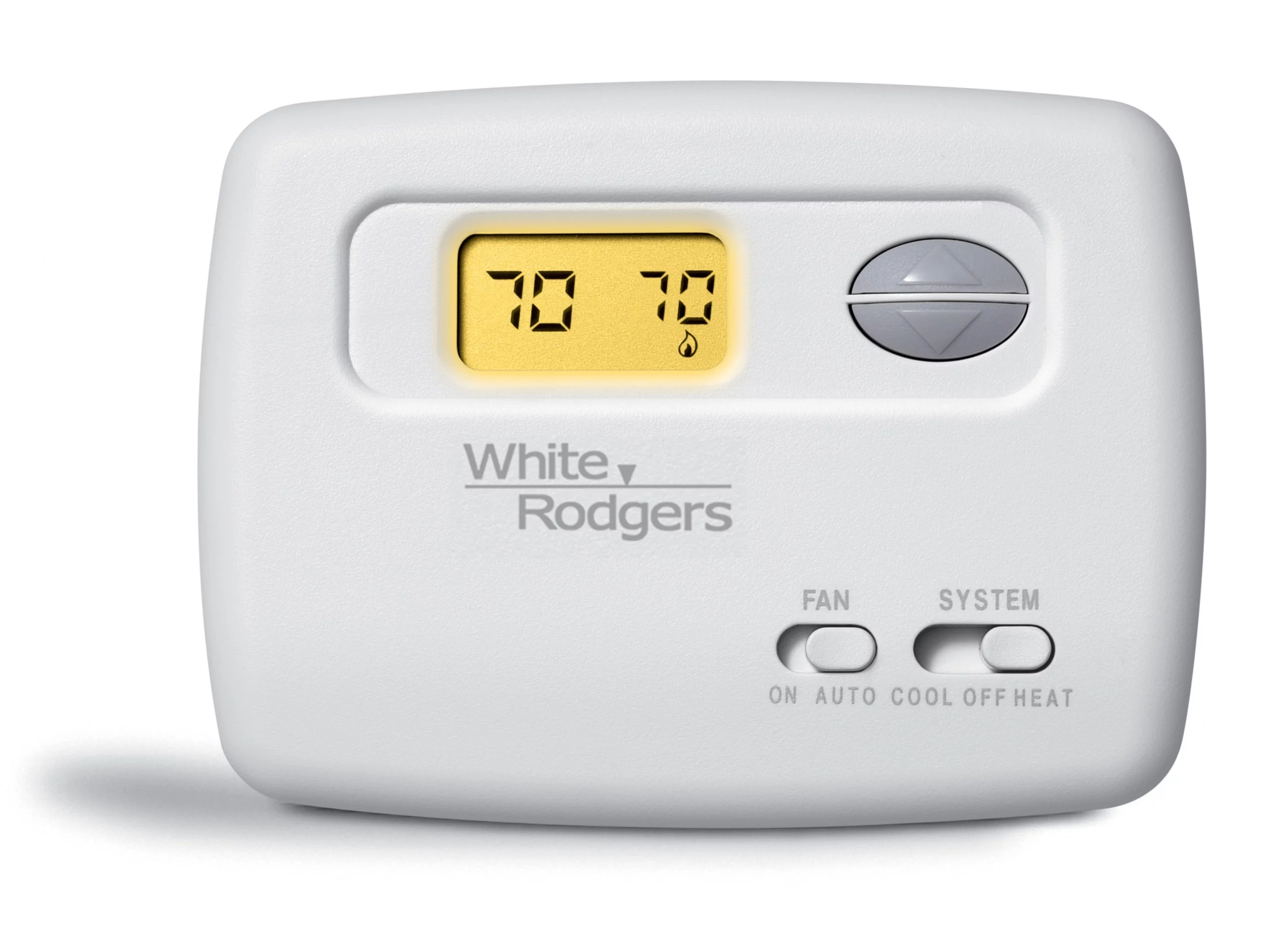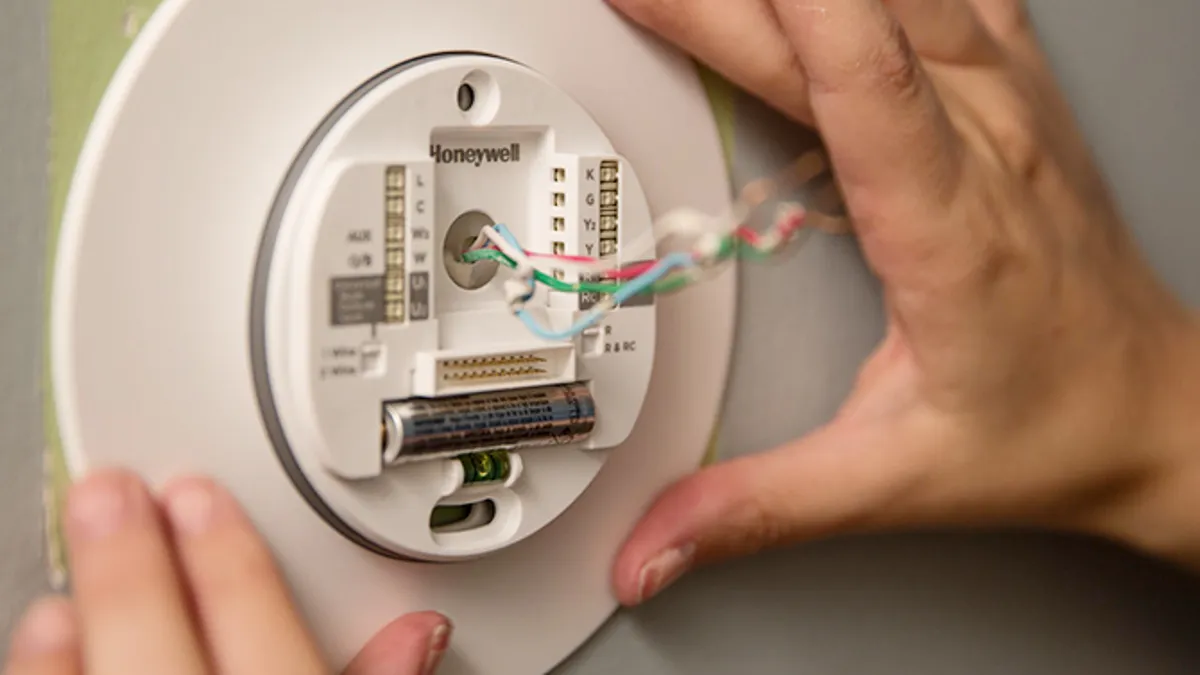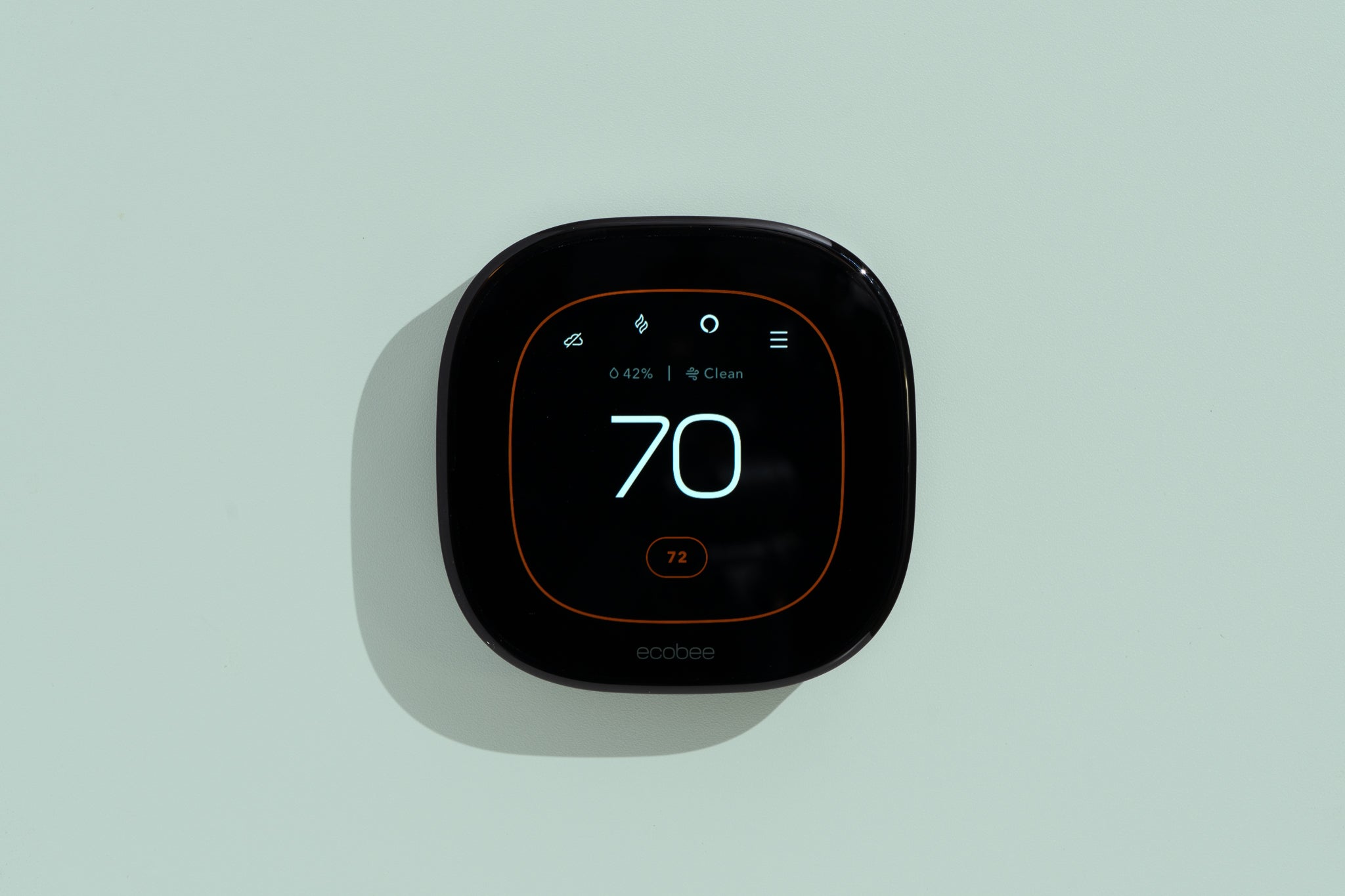Benefits of Registering a Smart Thermostat
A smart thermostat is a convenient and energy-efficient device that allows you to control the temperature of your home remotely. However, to fully unlock its potential, it is essential to register your smart thermostat. Registering your device comes with several benefits that enhance both its functionality and your overall experience. Let”s explore some of these benefits below.
1. Access to Advanced Features: Registering your smart thermostat provides you with access to a range of advanced features and capabilities. This includes features such as personalized scheduling, energy usage insights, and compatibility with other smart home devices. By registering your device, you can take full advantage of these cutting-edge features to make your home more comfortable and energy-efficient.
2. Remote Control and Monitoring: One of the primary benefits of a smart thermostat is the ability to control and monitor your home”s temperature remotely. By registering your device, you can connect it to your smartphone or other smart devices, allowing you to adjust the temperature from anywhere. This means you can pre-cool or pre-heat your home before you arrive, saving energy and ensuring a comfortable environment upon your arrival.
3. Energy Savings: Registering your smart thermostat enables you to access energy-saving features, such as adaptive learning and smart scheduling. These features learn your preferences and adjust the temperature settings accordingly, optimizing energy usage and reducing wasteful heating or cooling. By efficiently managing your energy consumption, you can potentially save on your utility bills while also reducing your carbon footprint.
4. Integration with Smart Home Systems: If you have other smart devices in your home, registering your smart thermostat allows for seamless integration with your existing smart home system. This enables you to create automated routines, control multiple devices with a single voice command, and enjoy a more centralized and streamlined smart home experience.
5. Software Updates and Improvements: Registering your smart thermostat ensures that you receive regular software updates and improvements. These updates not only enhance the performance and reliability of your device but also provide access to new features and functionalities. By keeping your device up to date, you can stay at the forefront of smart home technology and enjoy the latest innovations.
6. Warranty and Customer Support: Registering your smart thermostat often activates the warranty and allows you to receive reliable customer support. In case of any issues or concerns with your device, you can easily reach out to the manufacturer or service provider for assistance. This ensures that you have a smooth and hassle-free experience with your smart thermostat.
By taking a few moments to register your smart thermostat, you unlock a world of benefits that enhance its functionality, energy efficiency, and your overall satisfaction. So, don”t miss out on these advantages and get the most out of your smart thermostat by completing the registration process today.
How to Register a Smart Thermostat
Registering your smart thermostat is a straightforward process that ensures you can enjoy all the benefits and features it has to offer. While the exact steps may vary depending on the brand and model of your device, here are some general guidelines to help you through the registration process.
1. Gather Necessary Information: Before starting the registration process, gather the necessary information regarding your smart thermostat. This typically includes the device”s serial number, model number, and any unique identifiers provided by the manufacturer. You can usually find this information on the packaging, user manual, or on the device itself.
2. Visit the Manufacturer”s Website: Most smart thermostat manufacturers provide an online platform or website where you can register your device. Visit the manufacturer”s website and look for the “Register” or “Sign Up” option. If you are unsure, check the user manual or the manufacturer”s support page for specific instructions on how to register your smart thermostat.
3. Create an Account: To register your smart thermostat, you will typically need to create an account with the manufacturer. Provide the required information, such as your email address, password, and any additional details as prompted. Make sure to choose a strong password to protect your account”s security.
4. Enter Device Information: Once you have created your account, you will be prompted to enter the device information. This includes the serial number, model number, and any other relevant details. Carefully input the information to ensure accuracy.
5. Follow on-screen Instructions: Once you have entered the necessary device information, follow the on-screen instructions provided by the manufacturer. This may involve confirming your email address, agreeing to terms and conditions, or providing additional information for warranty purposes.
6. Verify Registration: After completing the registration process, you will usually receive a confirmation email or a message on the registration platform indicating that your smart thermostat has been successfully registered. Keep this confirmation for your records, as it may be required for warranty claims or customer support inquiries.
It is important to note that some smart thermostat models may have alternative registration methods, such as using a smartphone app or contacting customer support directly. If you are unsure about the specific registration process for your device, refer to the user manual or contact the manufacturer”s support team for assistance.
By following these general steps, you can easily register your smart thermostat and begin enjoying its full range of features and benefits. Don”t miss out on the convenience and energy savings that come with registering your device, and take the necessary steps to complete the registration process today.
Understanding the Importance of Registering a Smart Thermostat
Registering your smart thermostat may seem like an additional task, but it is crucial for maximizing its potential and ensuring a seamless user experience. By understanding the importance of registration, you can make an informed decision and reap the benefits of this simple process.
1. Warranty Activation: Registering your smart thermostat is often necessary to activate the warranty provided by the manufacturer. This ensures that you have coverage for any potential defects or malfunctions during the specified warranty period. Without registration, you may risk voiding the warranty, leaving you responsible for potential repair or replacement costs.
2. Safety and Security Updates: By registering your smart thermostat, you receive important safety and security updates from the manufacturer. These updates may address any vulnerabilities found in the device’s software or address potential security risks. Regularly updating your device’s software is essential to protect against any potential threats and keep your home and personal information secure.
3. Improved Compatibility: Registering your smart thermostat allows the manufacturer to understand your specific device and its compatibility with other connected smart home devices. This can help ensure a seamless integration and optimal performance when using your smart thermostat with other devices or smart home systems.
4. Customer Support: Registering your smart thermostat provides you with access to dedicated customer support offered by the manufacturer. In case of any questions, troubleshooting, or issues with your device, registered users often receive priority assistance. This ensures that you have reliable support if you encounter any technical or operational challenges with your smart thermostat.
5. Updates and Feature Enhancements: Manufacturers regularly release updates and feature enhancements for their smart thermostat models. By registering your device, you stay connected to these updates and improvements. These updates can introduce new functionalities, performance enhancements, and expanded capabilities, allowing you to optimize your overall smart home experience.
6. Personalized Recommendations: Registering your smart thermostat enables the manufacturer to provide personalized recommendations and insights based on your usage patterns. This can help you further optimize your energy efficiency, identify potential savings opportunities, and make more informed decisions regarding your home’s temperature control.
By registering your smart thermostat, you not only ensure warranty coverage but also gain access to essential updates, customer support, and personalized recommendations. It is a simple step that translates into an enhanced user experience, improved energy efficiency, and greater peace of mind. Take a few moments to complete the registration process and unlock the full potential of your smart thermostat.
Setting Up Your Smart Thermostat
Setting up your smart thermostat is a crucial step to ensure it functions correctly and provides you with the desired temperature control and energy-saving capabilities. While the specific steps may vary depending on the brand and model of your device, here are some general guidelines to help you get started with the setup process.
1. Read the User Manual: Before starting the setup process, carefully read the user manual provided by the manufacturer. It will contain specific instructions and safety guidelines that you need to follow for your particular smart thermostat model.
2. Check Compatibility: Ensure that your smart thermostat is compatible with your home’s heating, ventilation, and air conditioning (HVAC) system. Check the manufacturer’s website or consult the user manual to verify compatibility. If you are uncertain, it is best to consult with a professional HVAC technician for guidance.
3. Gather Tools and Materials: Collect all the necessary tools and materials you will need for the installation process. This may include a screwdriver, wire strippers, electrical tape, and any additional accessories provided by the manufacturer.
4. Turn Off Power: Before proceeding with the installation, turn off the power to your HVAC system at the breaker box. This is essential for safety and to prevent any electric shock during the installation process.
5. Remove Existing Thermostat: Remove the cover of your existing thermostat and disconnect the wires from the terminals. Take note of the wire labels or take a picture for reference when connecting the wires to your new smart thermostat.
6. Mount the New Thermostat: Install the mounting plate provided with your smart thermostat on the wall. Use a level to ensure it is straight. Secure the mounting plate using screws or other mounting hardware as instructed by the manufacturer.
7. Connect Wires: Carefully connect the wires from your HVAC system to the corresponding terminals on the back of your smart thermostat. Follow the wire labels or the picture you took earlier to ensure proper connections.
8. Power On and Connect: Turn the power back on at the breaker box and follow the manufacturer’s instructions to power on your smart thermostat. It may prompt you to connect to your home’s Wi-Fi network and guide you through the initial setup process on the device’s display.
9. Configure Settings: Once connected to your Wi-Fi network, you can use the companion app or the device’s display to configure settings such as temperature preferences, scheduling, and any other personalized features offered by your smart thermostat.
10. Test and Fine-Tune: After completing the setup process, test your smart thermostat by adjusting the temperature settings and ensuring that it correctly interacts with your HVAC system. Fine-tune any desired settings or preferences to ensure optimal comfort and energy efficiency.
Remember, these are general guidelines, and it is crucial to follow the specific instructions provided by the manufacturer for your smart thermostat. If you encounter any difficulties during the setup process or have questions, consult the user manual or reach out to the manufacturer’s customer support for assistance.
Common FAQs About Registering a Smart Thermostat
Registering a smart thermostat can sometimes raise questions for users who are new to the process or unsure about its importance. To provide clarity and address some common concerns, here are answers to frequently asked questions about registering a smart thermostat.
1. Why should I register my smart thermostat?
Registering your smart thermostat is crucial to activate the warranty, receive important software updates, access customer support, and ensure compatibility with other devices and smart home systems.
2. How do I register my smart thermostat?
The registration process typically involves visiting the manufacturer’s website, creating an account, and providing necessary information such as the device’s serial number and model number. Specific instructions can be found in the user manual or on the manufacturer’s support page.
3. Can I still use my smart thermostat without registering it?
Yes, you can still use the basic functionalities of your smart thermostat without registering it. However, registering allows you to unlock advanced features and provides access to important updates and support.
4. What if I don’t have the serial number or model number for registration?
If you don’t have the required information, check the device itself, the packaging, or the user manual. The serial number and model number are typically labeled on the device or in the provided documentation.
5. Is my personal information safe when registering my smart thermostat?
Manufacturers prioritize data security and take necessary measures to protect users’ personal information. It is important to review the manufacturer’s privacy policy to understand how they handle and safeguard your data.
6. Can I register my smart thermostat without an internet connection?
Registration usually requires an internet connection. However, some smart thermostats may also have alternative registration options such as phone registration or manual registration through customer support.
7. What benefits do I get from registering my smart thermostat?
Registering your smart thermostat provides benefits such as warranty coverage, safety updates, personalized recommendations, customer support, and access to software updates and feature enhancements.
8. Do I need to register my smart thermostat more than once?
In most cases, registration is a one-time process. However, it’s important to keep your account information updated and revisit the manufacturer’s website for any additional firmware updates or registration requirements in the future.
9. Can I register multiple smart thermostats under the same account?
Yes, many manufacturers allow you to register multiple smart thermostats under a single account, making it easier to manage and control them from a centralized platform.
10. Is there an expiration date for the registrations of smart thermostats?
Registrations typically do not expire unless explicitly stated by the manufacturer. However, it is recommended to keep your account information updated and remain connected to the manufacturer’s communication channels for any relevant updates or notifications.
By understanding these common questions and their answers, you can make informed decisions about registering your smart thermostat and gain maximum benefits from this process.
Troubleshooting Issues During Registration
While registering a smart thermostat is generally a straightforward process, you may encounter certain issues along the way. Here are some common issues that users might face during registration and some troubleshooting steps to help resolve them.
1. Invalid Serial Number or Model Number: If the registration platform indicates that the serial number or model number is invalid, double-check the information you entered. Ensure that you are inputting the correct characters and that there are no typos. If the issue persists, consult the user manual or contact the manufacturer’s customer support for further assistance.
2. Connectivity Problems: If you are unable to connect your smart thermostat to Wi-Fi during registration, check your internet connection. Verify that the Wi-Fi network signal is strong and that you have entered the correct network credentials. You can also try restarting your router or bringing your smart thermostat closer to the router to improve the signal strength.
3. Account Creation Issues: If you are having trouble creating an account during the registration process, make sure you are following the specified requirements for password length, special characters, and any other criteria. Clear your browser cache and cookies, or try using a different web browser to see if that resolves the issue. If the problem persists, contact the manufacturer’s customer support for assistance.
4. Software Update Errors: During the registration process, you may encounter errors related to software updates. Ensure that your smart thermostat is connected to a stable internet connection. Check if there are any pending updates for your device and follow the manufacturer’s instructions to install them correctly. If the issue persists, reach out to the manufacturer’s customer support for further guidance.
5. Server or Platform Issues: Occasionally, there may be temporary server or platform issues on the manufacturer’s end that can affect the registration process. If you receive error messages or experience delays during registration, try again after some time. Check the manufacturer’s support page or social media channels for any announcements regarding server or platform maintenance or updates.
6. Compatibility Problems: If your smart thermostat is not being recognized or is showing compatibility errors during registration, ensure that your device is compatible with the manufacturer’s registration platform. Check for any specific instructions or compatibility requirements provided by the manufacturer. If you are still experiencing compatibility issues, contact the manufacturer’s customer support for further assistance or alternative registration methods.
7. Account Validation Issues: Some registration platforms may require email validation or additional information to verify your account. If you are not receiving the validation email, check your spam or junk folder. Ensure that you have entered the correct email address during the registration process. If the issue persists, reach out to the manufacturer’s customer support for assistance.
8. Forgotten Account Information: If you have forgotten your account information, such as the password or email address used for registration, look for the “Forgot Password” or “Account Recovery” option on the manufacturer’s registration platform. Follow the provided steps to recover your account or reset your password. If you still cannot retrieve the information, contact the manufacturer’s customer support for further assistance.
If you encounter any other issues during the registration process that are not addressed here, refer to the user manual or contact the manufacturer’s customer support. They will be able to provide tailored guidance and troubleshooting steps based on your specific smart thermostat model.
Maximizing the Potential of Your Registered Smart Thermostat
Once you have completed the registration process for your smart thermostat, there are several steps you can take to maximize its potential and enjoy all the benefits it has to offer. By implementing these tips, you can optimize energy efficiency, enhance comfort, and make the most out of your registered smart thermostat.
1. Set Customized Schedules: Take advantage of your smart thermostat’s scheduling capabilities. Create personalized schedules that align with your daily routine. Adjust the temperature settings for different times of the day to maximize energy savings without sacrificing comfort.
2. Utilize Geofencing: Many smart thermostats offer geofencing features, which allow the device to track your location using GPS on your mobile device. Take advantage of this feature to automatically adjust the temperature based on your proximity to home. This ensures energy efficiency by only heating or cooling your home when you are nearby.
3. Explore Energy-Saving Modes: Look for energy-saving modes or features on your smart thermostat. These modes are designed to optimize energy usage by adjusting temperature settings or limiting unnecessary operation. Enable these modes when appropriate to conserve energy and reduce utility costs.
4. Learn and Adapt: Many smart thermostats have learning capabilities that adapt to your preferences and daily routines over time. Take advantage of this feature by allowing your smart thermostat to learn your temperature preferences and adjust accordingly. This helps to maintain a comfortable environment while minimizing energy waste.
5. Make Use of Remote Access: Utilize the remote access feature of your registered smart thermostat. Connect your device to your smartphone or other smart devices to control the temperature settings from anywhere. This allows you to make adjustments while away from home, ensuring comfort and energy efficiency.
6. Integrate with Other Smart Home Devices: Explore the possibilities of integrating your smart thermostat with other smart home devices. Connect it with your smart lighting system, voice assistants, or other compatible devices to create a more interconnected and streamlined smart home experience.
7. Monitor and Analyze Energy Usage: Take advantage of the energy monitoring and usage reporting features provided by your smart thermostat. Monitor your energy consumption patterns and identify potential areas for improvement. Use this information to make more informed decisions regarding temperature settings and energy-saving behaviors.
8. Stay Updated with Software Updates: Keep your smart thermostat’s software up to date by installing the latest firmware updates provided by the manufacturer. These updates often include bug fixes, performance enhancements, and new features. Staying updated ensures that you are benefiting from the latest advancements in smart thermostat technology.
9. Utilize Smart Home Integration: If you have a smart home ecosystem, explore the integration capabilities of your smart thermostat. Connect it with other devices and systems to create automated routines or scenes that enhance your overall home automation experience.
10. Take Advantage of Customer Support: If you have questions or encounter issues with your registered smart thermostat, refer to the manufacturer’s customer support. The support team can provide guidance, troubleshooting assistance, and answer any questions you may have to ensure that you are getting the most out of your device.
By following these tips, you can maximize the potential of your registered smart thermostat. Enjoy energy savings, improved comfort, and a more streamlined smart home experience as you make the most out of this advanced technology.
Conclusion
Registering your smart thermostat is an important step to unlock its full potential and enjoy the numerous benefits it offers. By completing the registration process, you activate the warranty, gain access to advanced features, and ensure compatibility with other devices and smart home systems.
Through registration, you open doors to personalized scheduling, remote control and monitoring, energy savings, and integration with other smart devices. It also allows for regular software updates and improvements, as well as access to reliable customer support for any assistance you may need.
Setting up your smart thermostat correctly is crucial for optimal performance. Follow the manufacturer’s instructions, verify compatibility, and utilize the available resources to troubleshoot any issues that may arise during the registration process. By taking the time to properly register and set up your smart thermostat, you are paving the way for an enhanced and efficient home comfort experience.
Maximizing the potential of your registered smart thermostat involves setting customized schedules, utilizing geofencing, exploring energy-saving modes, and integrating it with other smart home devices. Monitoring and analyzing your energy usage, staying updated with software updates, and making use of customer support are additional steps to ensure you get the most out of your device.
With a registered and properly set up smart thermostat, you can enjoy the convenience of controlling your home’s temperature from anywhere, optimize energy usage, and ultimately reduce your utility costs. Embrace the benefits of this advanced technology and make your home a more comfortable and efficient living space.







